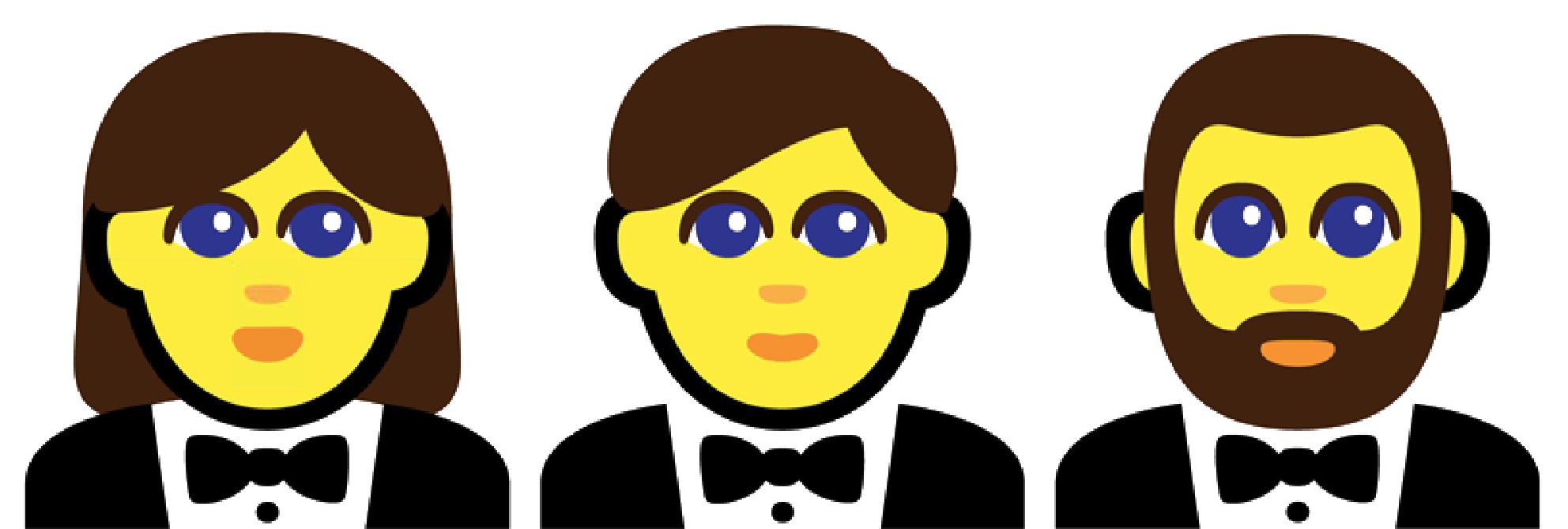Meet the designer behind gender-neutral emoji
Last year the Unicode Consortium—the group responsible for the selection and design of emoji—released a new series that reflected the multiplicity of gender identities. That’s thanks to Paul D. Hunt, who since 2016 has been a key advocate for making emoji more inclusive, less sexist, and a better reflection of the human experience.
Fighting to dismantle the gender stereotypes we see in emoji may seem unimportant. But consider that since their invention in 1999 by Shigetaka Kurita, emoji have expanded from 176 simple, pixelated icons to (as of September 2021) 3,633 increasingly detailed images. Every day, more and more people around the world have access to mobile phones and to emoji that add expressiveness to their text-based communications.
The fight for gender inclusivity in emoji is personal for Hunt, who is nonbinary and transgender. Hunt is also a trained typographer and designer rooted in linguistics and art. There may be no better person on the planet to think about what it means to produce and consume emoji that reflect the multiplicity of gender identities.

typically masculine, gender-inclusive, and feminine features, respectively.
Hunt’s interest in “language and alphabets and design and culture” was rooted in their small-town childhood in a Mormon community embedded within the Navajo Nation in Arizona. They went to college intending to study for an international business degree but switched to design. Hunt was active in an online community of typographers, Typophile, while interning at a type foundry in Buffalo, New York, and spent time drawing letters and designing fonts before earning a master’s in typeface design at the University of Reading in the UK and becoming a leading typeface designer at Adobe, specializing in fonts that don’t use the Latin alphabet.
But it is their participation in the emoji subcommittee of the Unicode Consortium that has garnered Hunt the most acclaim. And their thinking on gender and emoji had a surprising source: RuPaul’s Drag Race.
At first, Hunt rolled their eyes at the flamboyance of the Drag Race contestants. “I used to think RuPaul was too camp, and I didn’t really understand this whole drag queen phenomenon,” they say. But Hunt’s husband was a fan, so Hunt began watching the show and was increasingly drawn into it, moved by the contestants’ refusal to fall into conventional gender roles and stereotypes. This led to an epiphany: gender was a performance. Every day we make choices “to skew our appearance one way or another, whether that’s masculine or feminine,” they explain, “and it made me ask what it means to be masculine or feminine.”
Emoji tended to codify gender with traditional signs of masculinity (beard, mustache, short hair) and femininity (painted nails, longer hair, skirts). Hunt found this limiting, even disturbing: Why was a nurse a woman and a police officer a man? Why were “frivolous” activities like getting your nails painted or dancing depicted as feminine, while “serious” activities like construction were always depicted as masculine? Why were these images so staunchly gendered anyway?
Hunt decided to do something about this. They were already part of the Emoji Subcommittee, a group of designers and industry experts within the nonprofit Unicode Consortium, which works with hardware and software companies to make emoji readable and universal across all devices. So in 2016, Hunt submitted a proposal to push for gender-inclusive emoji, which they defined as “a humanized appearance that employs visual cues that are common to all genders by excluding stereotypes that are either explicitly masculine or feminine.”
It was revolutionary. To many, emoji were cutesy, simplistic additions to text, not humanistic and certainly not political. Hunt acknowledges as much, diplomatically saying there was a bit of skepticism from those running the committee. Some designers pointed to Google, which had tried to skirt gender and race with its yellow blobs in Gchat. On some level this worked, but Hunt found the accommodation a bit odd: Why couldn’t emoji express more of the nuances of human experience without resorting to abstraction?
Hunt’s proposal found an audience in Jennifer Daniel, who now leads the Unicode Emoji Subcommittee and has been instrumental in redefining the linguistics of emoji by ushering in an era that celebrates inclusivity and creative use of the symbols as a means of expression.
Daniel told me that when she joined the subcommittee, in 2018, “none of them [the gender-inclusive emoji Hunt had proposed] were properly supported.” She pushed for implementation of Hunt’s proposal, releasing guidelines for the creation of a gender-neutral class of emoji as well.
For Hunt, emoji are powerful means of expression precisely because words sometimes fail us. They recall meeting their future husband, an Australian, while living in San Francisco: “When you get to know someone, you build a common story together and develop your own little language.” That language for Hunt and their spouse included the heart emoji with sprinkles, which became a “logo” for the budding relationship. “That emoji meant a lot to me,” they say. “It still does.”
